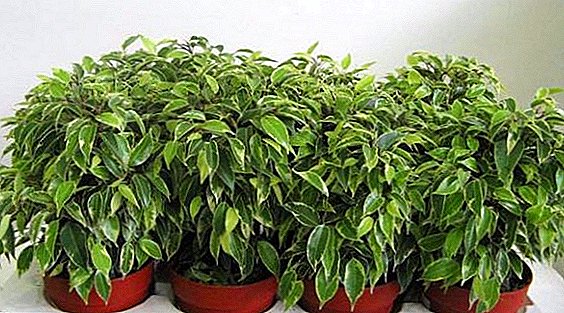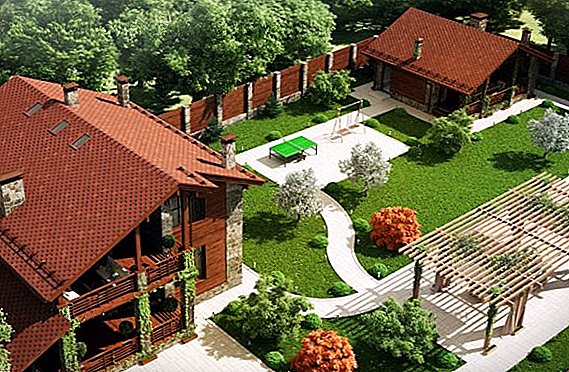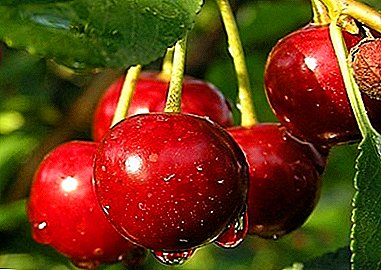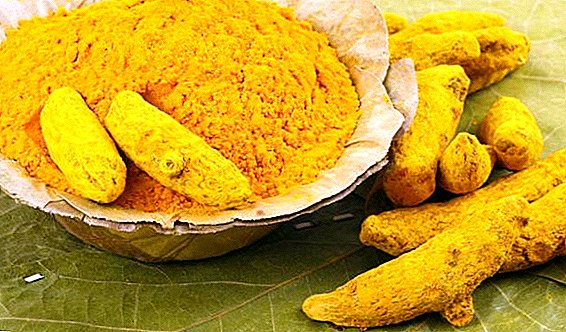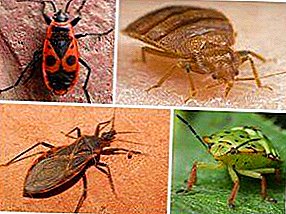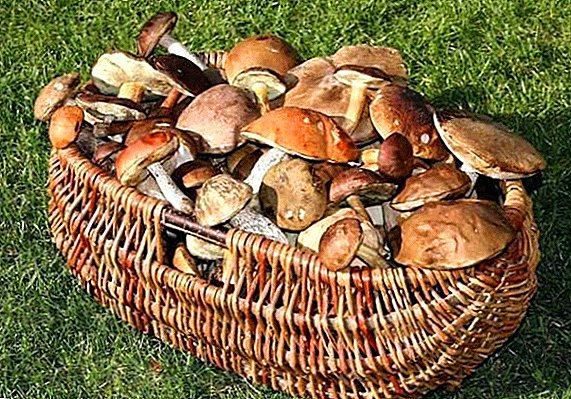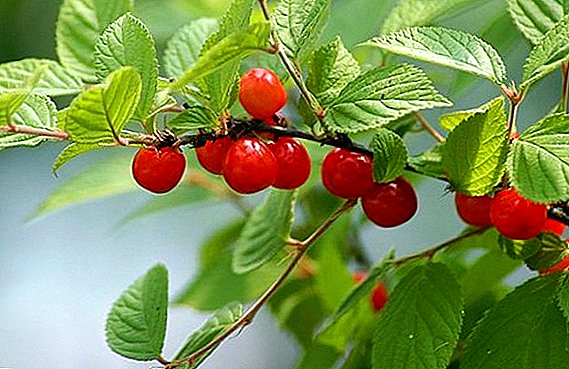 Felt cherry belongs to plum crops. Can interbreed with peach, plum, cherry plum, apricot. It is appreciated by gardeners for early ripening of fruits, stable yields, frost resistance and excellent decorative properties. Felt cherries are easy to plant and maintain, but require strict adherence to agricultural practices from gardeners.
Felt cherry belongs to plum crops. Can interbreed with peach, plum, cherry plum, apricot. It is appreciated by gardeners for early ripening of fruits, stable yields, frost resistance and excellent decorative properties. Felt cherries are easy to plant and maintain, but require strict adherence to agricultural practices from gardeners.
Did you know? China is the birthplace of culture. The plant owes its appearance in European latitudes to I. Michurin.
Felt cherry: description
The culture received its name because of the characteristic pile on the branches, leaves and fruits, similar to felt. Trees grow to a maximum of 2.5-3 meters in height. The berries contain organic acids, carbohydrates, vitamins of group B, PP, C. They ripen 7-10 days earlier than regular cherries, do not crumble.
Culture is propagated most often by rooted cuttings and air layering. On seedlings of plum, apricot, cherry plum, you can plant a felt cherry by eye or cutting.  The plant is also used to strengthen the slopes, creating hedges. The main lack of culture is fragility, but thanks to competent pruning the life span of a tree can be increased from 10 to 20 years. Thus, cherry felted has a description, in many respects similar to cherry ordinary.
The plant is also used to strengthen the slopes, creating hedges. The main lack of culture is fragility, but thanks to competent pruning the life span of a tree can be increased from 10 to 20 years. Thus, cherry felted has a description, in many respects similar to cherry ordinary.
Felt cherry growing conditions
Cherry lighting
Proper planting of felt cherries also includes the selection of the site that is optimal in illumination. For abundant fruiting, the tree needs a lot of sunlight, otherwise the berries become smaller, deformed, and later mature. Therefore, it is not necessary to plant a plant in the shade of other trees.
Felt cherry: what should be the soil for a rich harvest
 Before planting felt cherries, it is necessary to choose the right soil for it. The best option would be light (sandy, loamy), fertile soil with a neutral reaction and good drainage. Excess moisture in the soil can kill the plant. In the acidic earth it is necessary from time to time to make lime.
Before planting felt cherries, it is necessary to choose the right soil for it. The best option would be light (sandy, loamy), fertile soil with a neutral reaction and good drainage. Excess moisture in the soil can kill the plant. In the acidic earth it is necessary from time to time to make lime.
For pereovleniya on the site should be planted several varieties or several seedlings, depending on the characteristics of the variety. So, the self-fertile varieties of felt cherries include Delight, Children's, Oriental, Beauty, Dream, Summer, Spark. To the self-infertile - Natalie, Alice, Autumn Virovka and others.
Important! It is not recommended to plant felt cherries near coniferous trees.
Felt cherry planting
When can I put a felt cherry
Felt cherries (1-2-year-old seedlings) are best planted in early spring, before bud break. It is also possible planting felt cherries in the fall, in September. Saplings purchased later, it is better to prikopat until spring.
How to prepare a pit for planting
The optimal size of the pit for planting:
- depth - 50 cm;
- width - 60 cm.
- 3 buckets of organic fertilizers;
- 800 g of lime;
- potassium;
- phosphorus.

How to plant a felt cherry
The roots of the seedling before planting should be cut to 20-25 cm and carefully smeared with a clay mash. Planted it at the same depth at which the plant grew initially.
Important! It is impossible to deeply deepen the root neck of a tree into the ground, as it will die in this case. The neck should not be below 3-4 cm of soil level.
After planting, the land is plentifully watered, compacted and mulched with organic fertilizer or peat.
Features care for felted cherries in the garden
Soil care
 Caring for the soil is a prerequisite to successfully grow felt cherries. It includes:
Caring for the soil is a prerequisite to successfully grow felt cherries. It includes:
- timely destruction of weeds, depriving the tree of nutrients;
- periodic loosening of the ground to ensure the flow of air and moisture to the roots. At the same time try not to go more than 5 cm;
- soil moisture in dry periods.
Top dressing and watering
Feeding of felt cherries can be carried out immediately after flowering. To do this, in the tree circle each tree contribute:
- 5-7 kg of organic fertilizers;
- 70 g of phosphoric;
- 30 g of nitrogen;
- 20 g of potash.
Felt cherries are poured over if during the growing season and the formation of the fruits there is a clear lack of precipitation. Excessive moisture can damage the plant's root system and affect fruiting.
Felt cherry pruning
Pruning felted cherries is the best way to properly extend the life of a plant and get a rich harvest.
It is usually carried out in spring, before the appearance of the kidneys. The procedure involves the removal of:
- old branches, on which fruits no longer form;
- withered, weak, frozen shoots;
- branches directed deep into the crown;
- extra branches that prevent each other from growing normally.
 Felt cherry pruning is possible in the fall, while the scheme remains the same as in the spring works. However, it is complemented by cleaning the fallen leaves, removing damaged branches. All plant residues must be burned, as they can persist pathogens.
Felt cherry pruning is possible in the fall, while the scheme remains the same as in the spring works. However, it is complemented by cleaning the fallen leaves, removing damaged branches. All plant residues must be burned, as they can persist pathogens.Major pests and plant diseases
Despite the fact that felt cherries are characterized by resistance to diseases, there are diseases that can attack her. Monilioz (monilial burn) is caused by spores of the fungus that fell on the leaves of the pistil and eventually penetrate deep into the shoots. Usually the disease makes itself felt in the flowering period. By the end of May, the branches and leaves wither. In rainy weather, the disease develops faster than in the dry. For prophylaxis, it is necessary to spray seedlings with fungicides (Fitosporin-M, Abigak-Peak, Bordeaux liquid). Affected shoots cut out. Coccomycosis is a fungal disease that leads to early abscission of foliage. Because of this, the natural cycle of the cherry is broken, the immunity is reduced. Struggling with the disease treatment of shoots Bordeaux mixture, the drug "Horus".  The pests of felt cherries include:
The pests of felt cherries include:
- aphid;
- leafworm;
- plum fruit mill.
Felt Cherry: Harvesting
 Three years after planting, the felted cherry begins to bear fruit. Up to 4 kg of berries can be harvested from one tree. The crop ripens on all plants at the same time or at short intervals. The color of the fruit depends on the variety - from pinkish to dark red.
Three years after planting, the felted cherry begins to bear fruit. Up to 4 kg of berries can be harvested from one tree. The crop ripens on all plants at the same time or at short intervals. The color of the fruit depends on the variety - from pinkish to dark red.
If you plan to transport cherries, it is better to pick them as soon as they are fully formed and become characteristic of the mature fruit color. Felt cherry is an excellent option for those who want to grow an unpretentious plant that not only gives tasty and healthy fruits, but also pleases the eye with delicate foliage and abundant flowering.
Did you know? Berries do not tolerate transportation, so they rarely go on sale.


